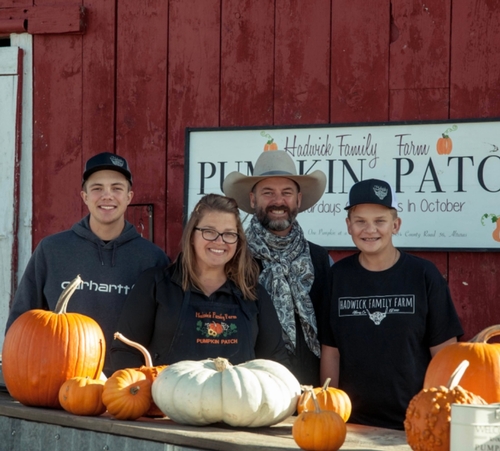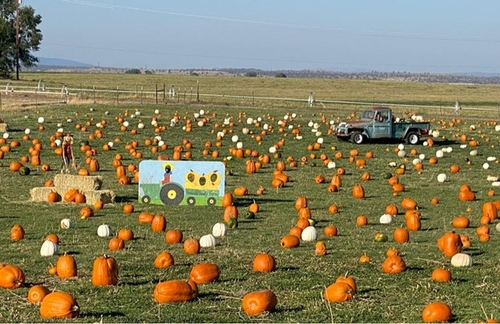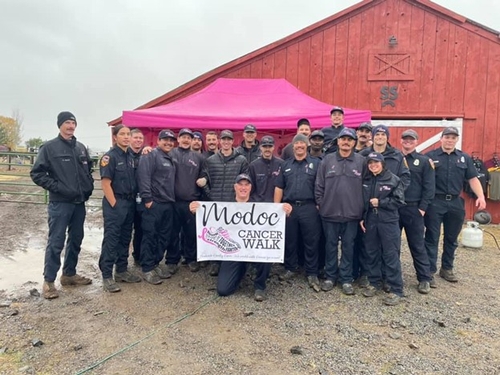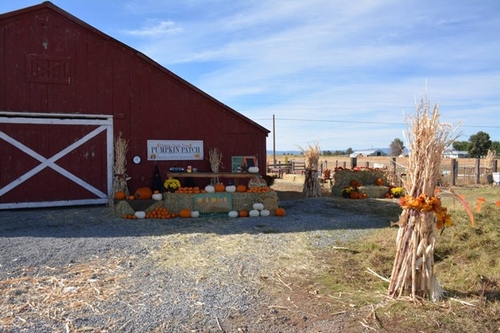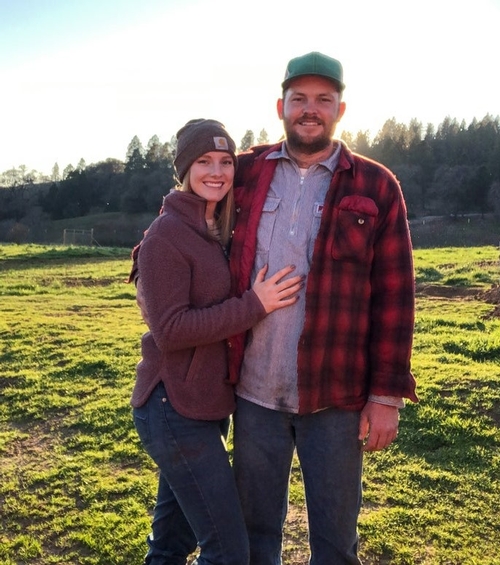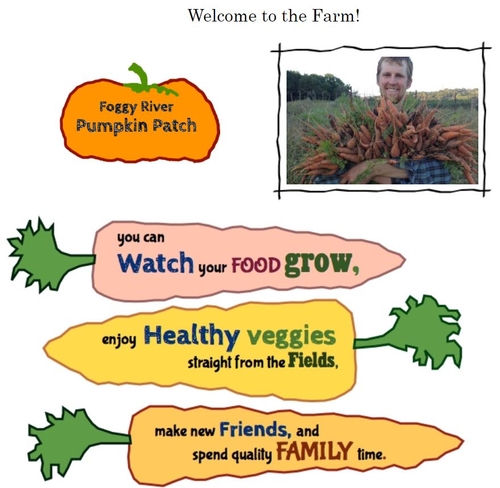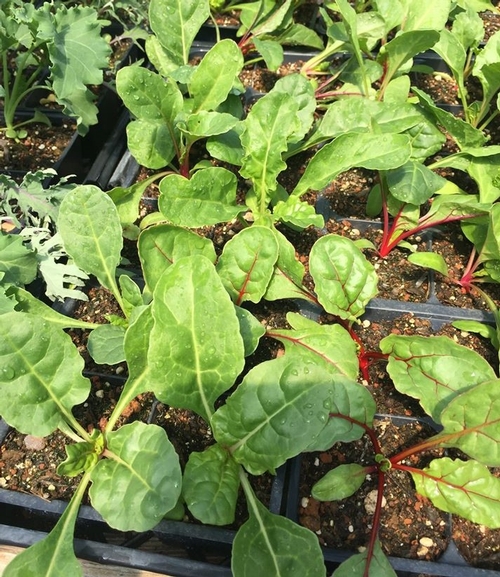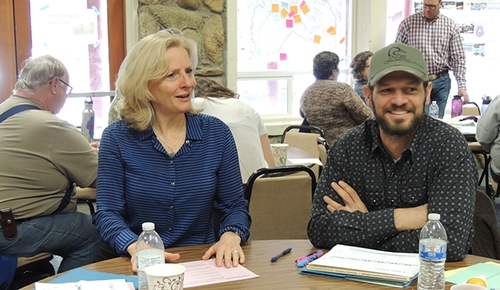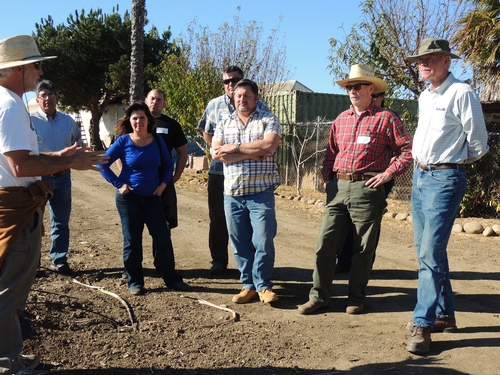
Posts Tagged: agriculture
SAREP, Small Farms and UC Master Food Preservers join forces to strengthen support for sustainable production, local food systems and farmer equity
Dahlquist-Willard named interim SAREP director
The past few years have intensified challenges to sustainability in California agriculture. At the same time, new opportunities for UC ANR programs to meet these challenges have arisen. Large-scale hiring, successfully competing for several multimillion-dollar grants, and expanding our reach to meet the needs of Californians are among UC ANR's recent positive developments. As we look ahead, the challenges to achieve sustainability, food security and economic development present new opportunities for our programs to work together.
UC ANR's Sustainable Agriculture Research and Education Program is a leader in promoting safe, sustainable farming practices across the state. The recent retirements of SAREP's director and business manager, as well as multiple recent large grant awards for statewide and regional projects, have created an opportunity to integrate key programs under SAREP to meet grant deliverables and provide administrative support efficiencies. Thus, we are integrating the Small Farms Network and UC Master Food Preserver program with SAREP to form a new framework for support and administration.
These three programs have multiple shared areas of focus and activity such as local food production and marketing, diversified farming systems, food safety and enhancing equity. By integrating these units, we will not only accomplish economies of scale but also foster collaboration on shared focus areas to strengthen overall program delivery to clients and communities. The programs will retain their individual names and identities under this new framework.
Due to the substantial changes to the SAREP director position, the search for a new SAREP director is on hold while we consider how best to integrate the three programs. I have appointed Ruth Dahlquist-Willard to serve as interim director of SAREP for three years effective July 1, 2023.
Over the next six to nine months, Ruth will coordinate brainstorming sessions with academics and staff to gather input on how best to leverage shared interests and resources across the units. She will remain based in Fresno during the interim role. Recruitment will begin soon for the UCCE small farms and specialty crops advisor position in Fresno County, and Ruth will be dedicated 100% to the SAREP director position following this transition.
I am confident that this new structure will strengthen each individual program while also creating new synergies within a powerful statewide unit that can support multiple projects and attract new funding opportunities.
Please join me in congratulating Ruth and lending your support to her in establishing this new framework to accomplish our collective goals.
Glenda Humiston
Vice President
Hadwick Family Farm Pumpkin Patch Offers Modoc County More Than Just Pumpkins
In 2016, Heather and Bryon Hadwick attended the Agritourism Intensive training, a signature course of the UC ANR Agritourism Program. Heather had been wanting to start a pumpkin patch, Bryon wasn't so sure. When they learned that an Agritourism Intensive was coming to Redding, they saw an opportunity to learn more about what it would take to start an agritourism enterprise and hear from experienced agritourism operators. Six years later, the Hadwick Family Farm Pumpkin Patch has become an October tradition for families from Modoc County and beyond and a launching pad for community engagement and education.
They knew it wouldn't be easy, and it hasn't been. To start, Heather and Bryon both work full-time off-farm jobs. They designed the business to be manageable part-time by the two of them with help from their children, who are now teenagers. Having enough time is only one of their obstacles; they also have to contend with insurance limitations and unpredictable weather. As with all agritourism operations, liability is a major concern. The Hadwick's only found a few insurance companies nationwide that would cover a pumpkin patch. In many ways, the activities that they offer at The Patch, as it is commonly called, are dictated by the insurance costs. For example, they wanted to offer tractor rides, but they would have to charge far more than they were comfortable with to offset the increase in insurance costs.
And then there's the weather. The pumpkin patch is open 3 to 4 weekends a year in October. Modoc's unpredictable weather makes it nearly impossible to project the season's earnings in advance. October has brought snow, rain, and 80-degree weather. Last year, in 2021, they were rained out every single weekend. While enough visitors showed up in their rain gear to keep the business from losing money, the experience made them question whether or not they wanted to keep it going. They moved forward with opening again in 2022, welcoming more visitors on opening day than the entire 2021 season.
Navigating business decisions amongst the limitations and uncertainties of time, insurance, and weather is no doubt challenging, but clear goals and metrics to monitor progress towards reaching those goals have helped guide the Hadwicks. Community is The Patch's founding principal. As Heather puts it, “We see the pumpkin patch as more of a community service. As long as we are in the black, we're good and will keep it going.”
The pumpkin patch itself is geared towards local families, with a keen eye on keeping prices accessible. For the first time this year, pumpkin prices were raised to offset the business's rising operating costs (for one thing, the cost of their insurance doubled this year). Entry remained $5 and includes all activities. Part of these proceeds are donated back to their local FFA chapters. “Our goal is to keep it at $5. We want it to be affordable, most families spend 2 or 3 hours at the Patch.” Heather adds, “There isn't a lot you can do these days for that long for $5 a person.” So when it comes to adding activities like tractor rides that would raise the cost too much for local families, the Hadwick's opt to keep things affordable.
In addition to keeping prices as low as possible, The Patch frequently lends their space to community groups and partners with local businesses. Floral arrangement classes, facepainting at the farm to promote a new cosmetologist business, cancer awareness walks, and frequent collaborations with the local FFA are a few examples of how the Hadwick's use their space to support community efforts and provide agricultural education. Hadwick Family Farm also hosts field trips for schools from Modoc, bordering counties and Oregon schools.
While community collaborations are in line with their business's mission, it also helps with getting the word out, saving them money on marketing. “We are mostly word of mouth. We've tried different advertising venues and word of mouth and social media seem to work the best for us,” according to Heather.
In 2021 and 2022, the UC ANR Agritourism Program partnered with UC Cooperative Extension Modoc County and local nonprofit Modoc Harvest to hold a series of workshops, funded by a USDA Farmers Market Promotion Program grant, for area farmers and community members to explore agritourism opportunities and generate interest in expanding Modoc's agritourism offerings. To supplement a workshop about hosting on-farm events, Hadwick Family Farm Pumpkin Patch hosted their first farm-to-table dinner as a fundraiser for Modoc Harvest. With little agritourism, such as on-farm events, taking place in Modoc County at present, the county does not have a framework for regulating activities, other than the statewide guidelines for farm stands and farm stays. As interest in starting agritourism enterprises increases in Modoc County, UCCE Modoc County and the UC ANR Agritourism Program will work with county regulators and other stakeholders to develop guidelines that clear a path for farmers and ranchers that are interested in expanding their offerings.
In agritourism it is often beneficial to have multiple agritourism enterprises within close proximity that can collaboratively market their businesses and attract a greater number of visitors. Hadwick Family Farm Pumpkin Patch provides a look at an operation that has achieved success by marketing to their local residents and creating community partnerships in the absence of an agritourism network.
In regions like Modoc County that do not have a developed agritourism industry, businesses like Hadwick Family Farm Pumpkin Patch, can serve as proof of concept for the potential viability of agritourism. The Hadwick's success, challenges, and insights can help inform other potential agritourism operators in the area as well as regulators. By taking a chance on opening the only pumpkin patch, and one of the only agritourism operations, in 100 or so miles, the Hadwick's are engaging and educating their community, and possibly leading the way for agritourism in Modoc County.
UC SAREP webinars help farmers, ranchers pivot to direct sales during pandemic
Partnering for California
The COVID-19 pandemic hit farmers hard. Supply chains were disrupted and even non-traditional agritourism revenue streams such as hay mazes and on-farm events had to be canceled due to shelter-in-place mandates.
On the other hand, demand for local farm products skyrocketed, and thus many farmers and ranchers needed a quick pivot strategy and a set of new skills.
UC Sustainable Agriculture Research and Education Program (SAREP) was well-positioned to support this shift toward direct sales, pulling in trusted community partners and experienced farmers and ranchers to put together a comprehensive webinar series, “Agritourism and Direct Sales: Best Practices in COVID Times and Beyond”.
Funded by a USDA Farmers Market Promotion Program (FMPP) grant, the webinar series is part of a three-year project, Strengthening California Local Food Networks with Agritourism and Direct Sales, which provides trainings and technical assistance to farmers and ranchers on how to diversify their revenue streams.
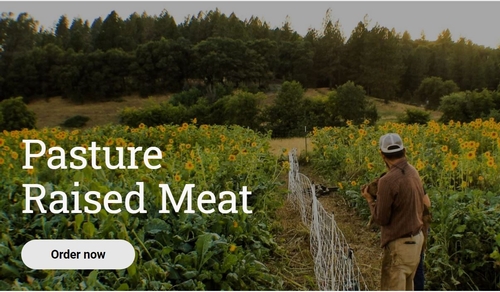
The strength of the series, which includes eight webinars that were recorded earlier this year and are available online, lies in the collaborations among the UC SAREP Agritourism Program, UCCE, community groups, and farmers and ranchers.
The series features a range of speakers, including representatives from community organizations, technical experts, academic researchers, and farmers – all coming together to build resilience and adaptability for small-farming operations and the agritourism industry across California during the pandemic and after.
“It's great to collaborate with other organizations and regions, to learn from each other and to broaden our networks, as we are all working to create more resilient and sustainable food systems,” said Carmen Snyder, executive director of Sonoma County Farm Trails, one of the nonprofit partners on this project.
And because of those strong partnerships, the webinar topics reflected the on-the-ground needs facing agricultural producers.
“COVID initially dramatically affected farmers' restaurant contracts, with many losing more than 80% of their accounts overnight,” Snyder said. “CSAs [Community Supported Agriculture], on the other hand, couldn't keep up with the demand, and all of our CSA members were full and had wait lists for the first time ever. Producers pivoted by creating more online stores, including pick-up and delivery options. It was a challenge for them to navigate the new technology and platforms.”
Unsurprisingly, two of the more popular webinars were “Online Sales Options and Methods” and “Safe, Healthy and Successful Farm Stands”.
The “Online Sales Options and Methods” webinar, a partnership with the Community Alliance with Family Farmers (CAFF), provided an overview of several e-commerce marketing and online sales strategies that farmers can implement to diversify their revenue pathways and reach new customers. CAFF stressed the importance of farmers enhancing their resiliency through e-commerce.
The webinar also featured Ciara Shapiro, the owner of AM Ranch in Penn Valley, who shared her experience with online marketing and how it helped her and her husband survive the pandemic when the restaurants and farmers markets they sold to shut down. This personal and informative webinar demonstrated the effectiveness of online sales and marketing, while highlighting available resources from groups like CAFF.
The “Safe, Healthy and Successful Farm Stands” webinar was aimed at farms of all sizes and organizations that operate or advise agricultural operations using farm stands as a form of revenue. The webinar provided an outline of the rules and regulations that farm stand operators needed to follow during COVID – as well as during business-as-usual times.
It featured two guest speakers who run successful farm stands: Emmett Hopkins, the owner of Foggy River Farm in Sonoma and Reyna Yagi, the farm manager at Petaluma Bounty Farm. They shared their experiences during COVID and how they had to pivot to remain profitable and accessible within state guidelines.
Both farmers saw an increase in farm stand business during the pandemic, which Yagi attributed to the “traffic storm of people” who attended their annual plant sale fundraiser and came to participate in new farm outdoor activities and volunteer opportunities. Yagi also noted the growing number of low-income individuals who were unable to access fresh produce during the pandemic.
The speakers' shared experiences running successful farm stands gave audience members tangible examples and real-time information on how to incorporate farm stands into their businesses.
Carmen Snyder of Sonoma County Farm Trails, which helped circulate the recorded webinars to their network of farmers and ranchers, remarked: “these webinars were extremely helpful for local producers, to get clarity on best pandemic practices during these challenging times and to learn how other producers are adapting and navigating the circumstances.”
Buy local to minimize the environmental impact of live Christmas trees
Christmas tree production is a big business that offers economic benefits and environmental impacts, reported Erin Blakemore in Popular Science.
Christmas trees' environmental tolls include fuel for helicopters to harvest and trucks to transport, but UC Cooperative Extension farm advisor Lynn Wunderlich says fertilizer and pesticide use are the main culprits.
"There is pesticide use across the board," she said.
Christmas tree farmers can use integrated pest management tools to reduce pesticide use, including monitoring for pests and natural predators and selecting pest resistant trees, such as Nordmann and Turkish firs.
Glyphosate is used to manage weeds between seedlings and on the walkways between trees. Wunderlich said that since the herbicide is used in small quantities - and not on the trees themselves - consumers don't have to worry about herbicide residue in their homes.
Live Christmas trees benefit the environment by capturing carbon dioxide and storing it in their branches, roots and needles. Availability of the natural option also means fewer artificial trees are set up during the holidays.
"Artificial trees have major environmental impacts," Wunderlich said.
Since live tree impacts also stem from the distance consumers drive to purchase the trees, for the greenest tree possible, Wunderlich suggests getting to know your local tree farmer.
"Buy local, stay local," she said.
Agritourism Intensive 2021 classes start soon
Are you considering agritourism or nature tourism on your farm or ranch?
Would you like to expand your current agritourism or nature tourism business?
Agritourism Intensive 2021 classes are now open for registration by farmers, ranchers, agritourism operators and others involved in agritourism in the Central Coast (SLO) and North Coast (Mendocino) regions.
Learn more & Sign up today to save your space!
Due to COVID-19 restrictions, this year's classes will be mostly virtual, conducted via Zoom, with one in-person field day in each class series if allowed by health authorities. However, each class will be regionally-focused, participatory, and limited to participants from within the region.
- Local agritourism operators will share their own experiences and will be part of a supportive network of advisors as class participants plan and start new enterprises.
- Participants will learn from experts in business planning, regulatory compliance, risk management, hospitality and cost-effective marketing, including social media.
- The hands-on, interactive activities will guide participants as they assess their own farms or ranches for agritourism potential and start their own business, risk management and marketing plans.
- Each participant will receive by US mail a free copy of the extensive handbook, “Agritourism and Nature Tourism in California,” used as a text for the class.
San Luis Obispo class curriculum
SLO Registration:http://ucanr.edu/agtourslo
Mendocino Registration:http://ucanr.edu/agtourmendo
Important: The SLO region Agritourism Intensive classes is open only to farmers, ranchers and others involved in agritourism in San Luis Obispo, Monterey and Santa Barbara Counties.
SLO Class Format: 6 participatory 2-hour Zoom meetings, every Tuesday from January 12, 2021 to February 16, 2021, 9 a.m. to 11:00 a.m. (a possible in-person field day Jan. 26). Shared zoom participation will be available at the SLO Farm Bureau office for those with poor internet access.
SLO Registration: http://ucanr.edu/agtourslo
Important: The Mendocino region Agritourism Intensive class is open only to farmers, ranchers and others involved in or planning agritourism in Mendocino, Lake and Sonoma Counties.
Mendocino Class Format: 4 participatory 2-hour Zoom meetings, every Wednesday morning from March 3, 2021 through March 24, 2021, and one in-person field day on the site of a Mendocino County agritourism operation (location TBD) on March 31.
Mendocino Registration: http://ucanr.edu/agtourmendo
Workshop fee: $40 (for all class sessions, including class text mailed to you and lunch at on-farm field day session)
Information & scholarship options: Penny Leff, paleff@ucanr.edu, 530-902-9763 (cell)
This material is based upon work supported by USDA/NIFA under Award Number 2018-70027-28587.
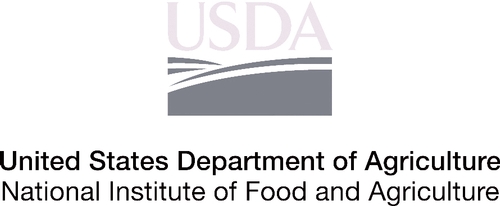

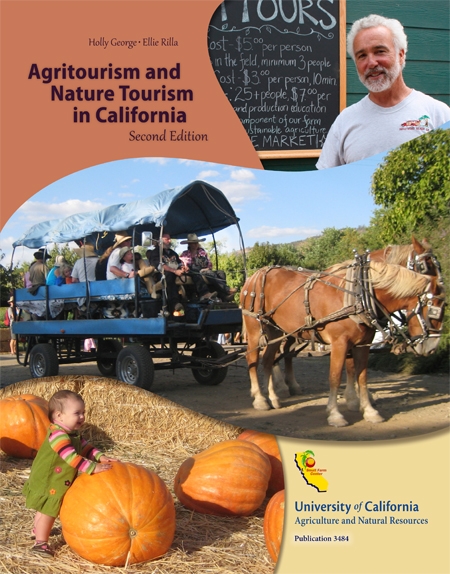
3484COV 2011
